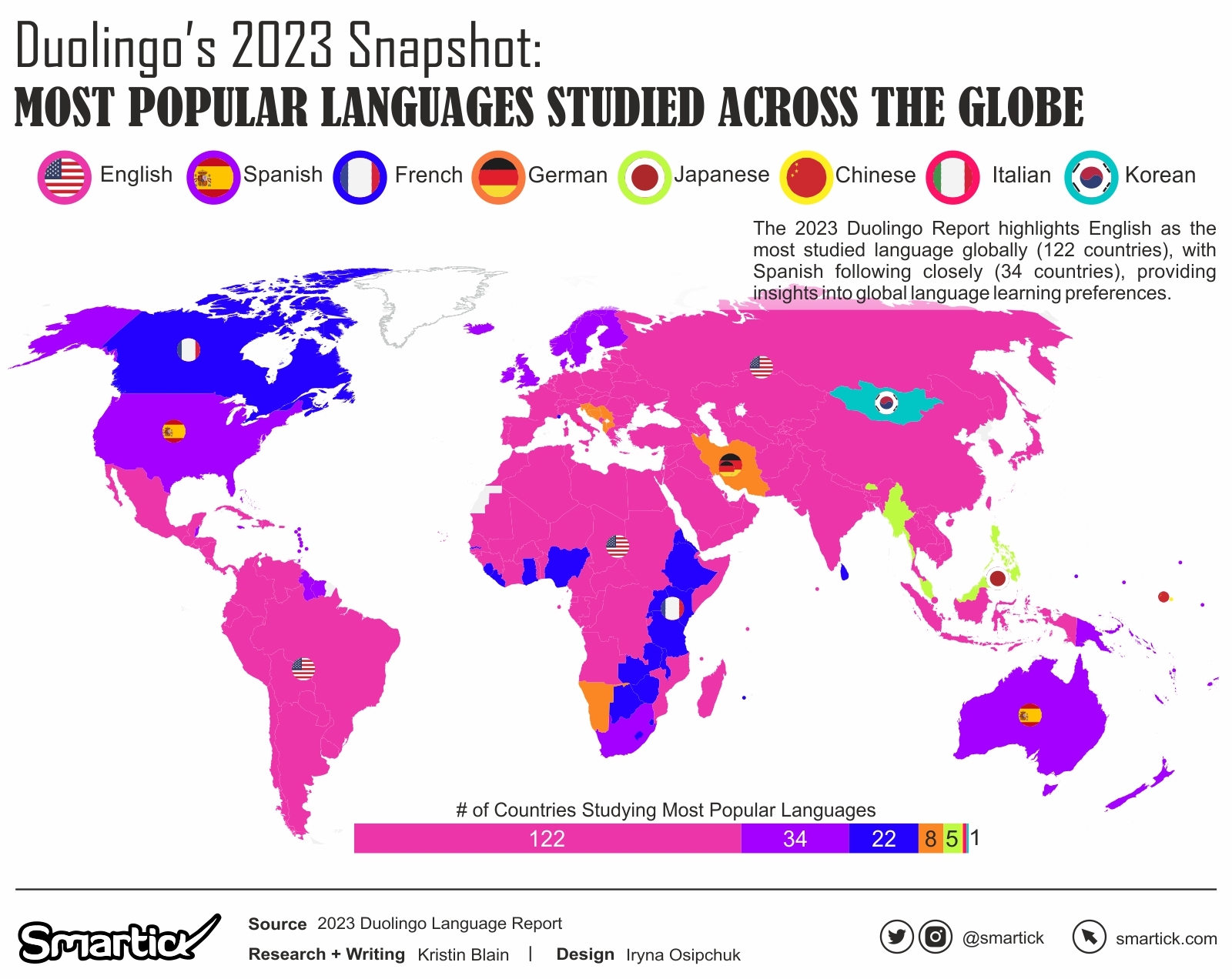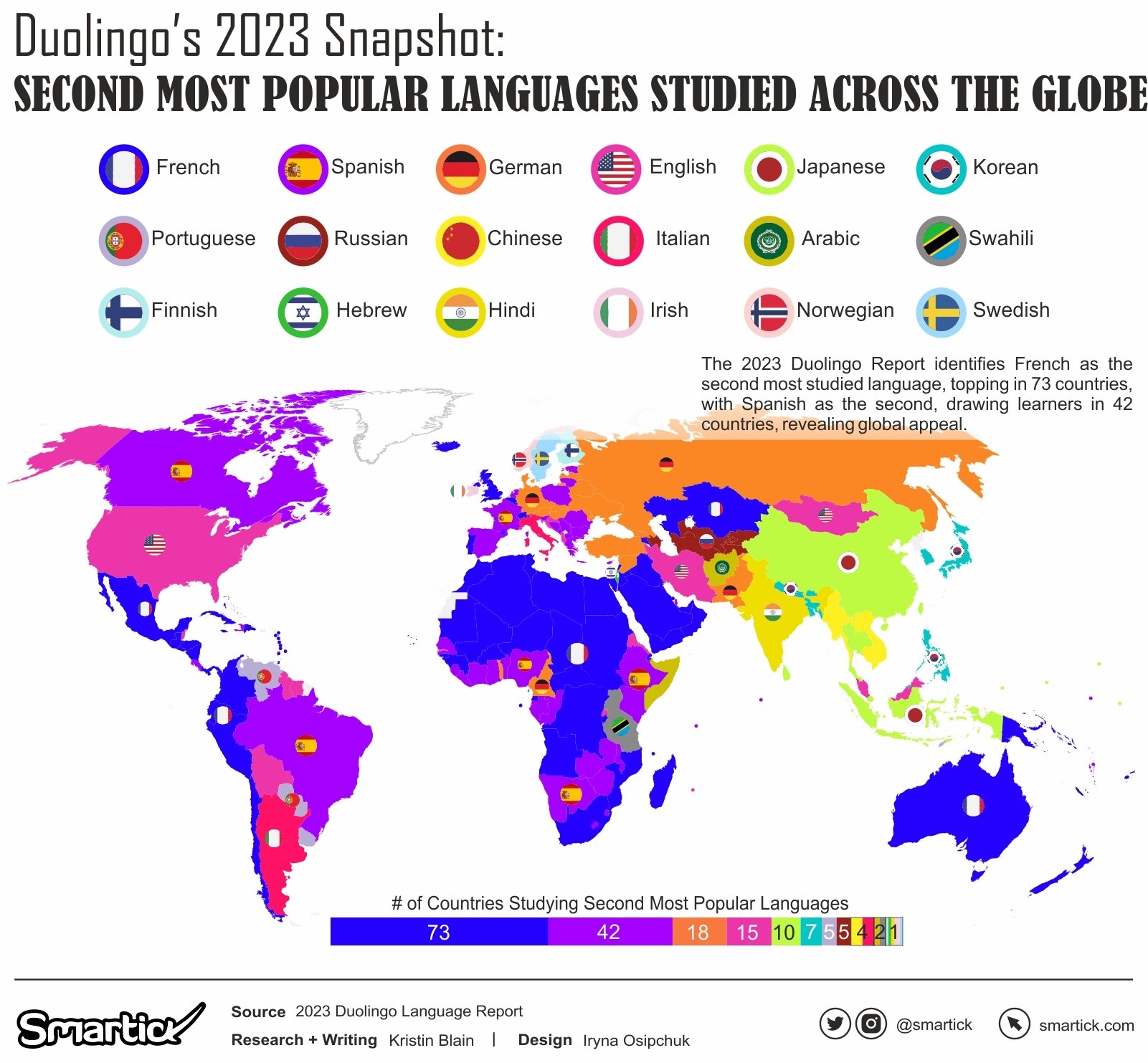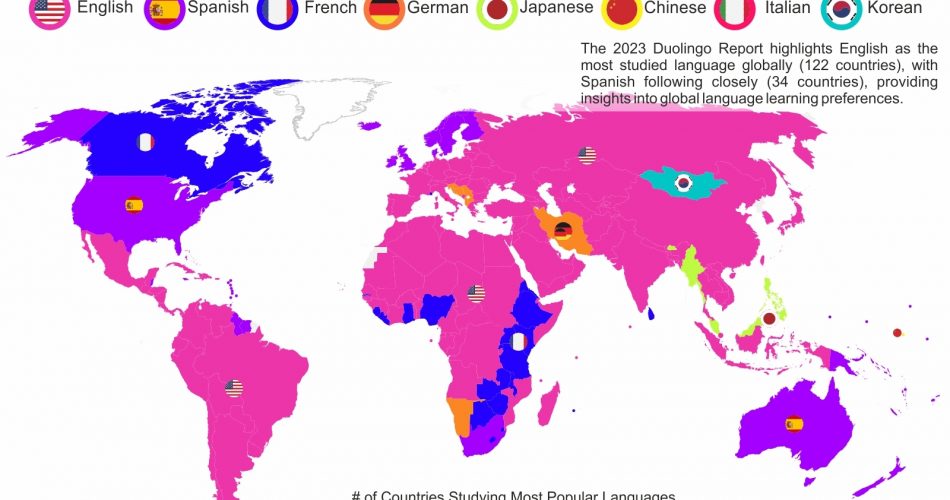
Language learning is a journey that connects people across borders, and in this digital age. The recently released 2023 Duolingo Language Report offers a fascinating glimpse into the trends and shifts in global language learning. Let’s dive into the numbers and see what the data reveals.

This year brought about some noteworthy changes in language learning patterns. The top 10 list saw a shuffle, influenced by world events and evolving interests. These shifts offer valuable insights into the languages people are eager to explore.
Number of Countries Studying Most Popular Languages
In 2023, English continues to assert its global dominance as the most studied language, captivating learners in a staggering 122 countries. Its universal appeal for economic and educational opportunities remains unwavering. Spanish follows suit, capturing the interest of language enthusiasts in 34 countries, establishing itself as the second most popular language studied worldwide. French claims the third spot, drawing learners from 22 countries who are keen on unraveling the beauty of the language. Meanwhile, German secures the fourth position, attracting learners from nine countries with its linguistic intricacies. Japanese holds its ground as the fifth most popular language, intriguing learners in five countries and making its mark on the global language learning stage.

Number of Countries Studying Second Most Popular Languages
When it comes to the second most popular languages, French takes the lead, fascinating learners across 73 countries. Its widespread appeal underscores its enduring charm. Spanish follows closely behind, captivating learners in 42 countries, solidifying its status as a go-to language for many. German claims the third spot in the second language category, with 19 countries finding fascination in its complexities. English, despite being the most studied language overall, still captures the interest of learners in 15 countries as a secondary language. Japanese rounds off the top five, continuing to enthrall learners in 10 countries with its unique linguistic nuances. These insights illuminate the diverse linguistic preferences shaping the global language learning landscape in 2023.
Other Noteworthy Insights
Korean Jumps to #6
Korean made a significant leap to claim the 6th spot globally. This rise can be attributed to its growing popularity in countries like India, where it witnessed an impressive 75% year-over-year increase.
Portuguese Enters the Top 10
Portuguese secured its place in the top 10 languages, surpassing Russian. This shift reflects changing cultural interests, with a focus on Brazil and Portugal, particularly for travelers. Connecting with people (23%) and preparing for travel (18%) emerged as the top reasons for learning Portuguese.
Swedish’s Surprise Twist
Breaking from tradition, Swedish is no longer the most popular language to study in Sweden. Spanish has claimed the top spot, indicating a shift in linguistic preferences. The reasons behind this change are worth exploring, shedding light on the dynamic nature of language learning.
In a world where language acts as a bridge, the 2023 Duolingo Language Report provides a roadmap of the linguistic landscape. The global trends, highlighted through these numbers, showcase not just what languages people are learning, but also the evolving motivations behind their language journeys. As we navigate this linguistic tapestry, it’s clear that language learning is as diverse as the people engaging in it.

